#Bolton Street Cemetery
Explore tagged Tumblr posts
Text
The Ghosts of Jacksonville, TX
Haunted Jacksonville, TX: A Hidden Paranormal Hotspot
Introduction Nestled in the heart of East Texas, Jacksonville is a charming town with an interesting combination of rich history and an eerie allure. Known for its friendly locals and serene landscapes, its haunted spots present an exciting playground for paranormal enthusiasts. Whether you’re visiting for ghostly encounters or historical exploration, Jacksonville has tales that will send shivers down your spine!
1. The 1899 Bolton Street House
Built in 1899, this lovely home is often described as one of the area's most haunted locations. It is the ideal destination for those with a taste for the eerie and unusual. Home to the Bolton Family, the spirits that allegedly remain could be any one of the family members who once lived there. You can find many of their graves at the Jacksonville City Cemetery.
Visitors frequently report strange occurrences, from flickering lights to unusual temperature drops. The house has a storied history involving previous owners who experienced both joyful events and tragic misfortunes, which some believe contribute to its paranormal reputation.
As you explore the house's beautifully preserved rooms, let your imagination run wild with the stories of its former residents. Join a group to explore the hidden mysteries of the 1899 Bolton House, and perhaps you’ll even catch a glimpse of its ethereal inhabitants.
My team and I had the pleasure of investigating this lovely house in 2024. One of the things we encountered involved a couple of the many battery powered tea lights that are placed around the house. The lights were all on when we began but, on multiple occasions, we would find a couple of them turned off. They were physically turned off so we turned them back on. We found them to be physically turned off again later in the evening. We were unable to recreate or determine a cause for these occurrences.
Tip to paranormal teams: this is a decent sized house but, as you can imagine, sound carries and the floors and steps are creaky. While there is space for several people, I suggest limiting the investigation team size to no more than 6 - 8. Just my humble opinion.
2. The Cherokee County Courthouse (in nearby Rusk, TX)
Nestled in the heart of Cherokee County, Georgia, the historic Cherokee County Courthouse is a site steeped in intriguing tales of the past. Built in 1889, this courthouse has witnessed countless legal proceedings and community events. But as the whispers of history echo through its halls, so too do the ghostly legends that surround it.
Legend has it that the spirits of past courthouse denizens linger within its walls. Employees and visitors alike have reported strange occurrences, including unexplained noises, cold spots, and even fleeting apparitions. Some claim they’ve witnessed furniture moving on its own or felt an eerie presence watching them from the shadows.
Notably, the courthouse’s connection to several historic trials may explain its paranormal reputation. The lingering energy from these important judicial proceedings, as well as the emotional weight of the stories told inside, can create an atmosphere ripe for hauntings.
The Cherokee County Courthouse is an excellent stop for history buffs and ghost hunters alike. While exploring, be sure to keep an eye out for peculiar happenings. Whether you're peering at historical artifacts or enjoying the building's architectural splendor, you're bound to feel the weight of history and perhaps brush against the supernatural.
3. Cherokee Sanitarium AKA Nan Travis Memorial Hospital
Nestled in the heart of Jacksonville, Texas, the Cherokee Sanitarium holds an intriguing place in both history and the supernatural landscape of the region. Built in the early 1900s, this former medical facility started as a small 9-bed facility. It was expanded to 40 beds in 1925 to serve the growing community. In 1930 it was renamed the Nan Travis Memorial Hospital and subsequent expansions have followed over the years as the needs of the community grew.
Today, the Cherokee Sanitarium is reputed to be haunted, attracting those fascinated by ghostly encounters. Guests and ghost hunters report feelings of unease, the sound of footsteps echoing through empty halls, and glimpses of shadowy figures wandering the grounds. Other commonly reported paranormal experiences include disembodied voices, cold spots, and phantom footsteps.
4. Lon Morris College
Lon Morris College was established on 1873 in Kilgore, TX, as the Alexander Institute. It moved to Jacksonville in 1894 but the name was changed to Long Morris College in 1924. Craven-Wilson Hall is allegedly haunted by a female spirit believed to be a former dorm director. Footsteps, disembodied laughter, and fleeting shadows were not uncommon reports. Now permanently closed, you will not be able to visit the hall but the ghost stories remain.
Historic Cemeteries You Might Want to Check Out
Earle’s Chapel Cemetery - the oldest grave is that of Elijah Earle who died in 1880.
Grimes Cemetery
Jacksonville City Cemetery
Conclusion
Jacksonville, TX, offers an array of haunted spots that beautifully blend history with a hint of the supernatural. Whether you’re exploring eerie buildings, walking through historic cemeteries, or sitting by a haunted river, this town ensures an unforgettable experience for the paranormal seeker. Gather your ghost-hunting gear, assemble your crew, and prepare for a thrilling adventure where history and hauntings intertwine!
Make this beautiful day count!
Annette
0 notes
Text
Wellington cemeteries
As with any city Wellington is home to a number of cemeteries. They’re usually located on the fringe of a city, but as the city grows they become central and fill to capacity, and new ones are opened on the new fringe of the city. Wellington is now onto its third generation of cemeteries. Bolton Street Cemetery operated from 1840 to 1892, and is home to many notable early Wellingtonians…

View On WordPress
#Bolton Street Cemetery#cemeteries#cemetery#Karori Cemetery#Makara Cemetery#Matiu / Somes Island#Mount Street Cemetery#New Zealand#photography#Somes Island cemetery#travel#Wellington#Wellington cemeteries
2 notes
·
View notes
Photo
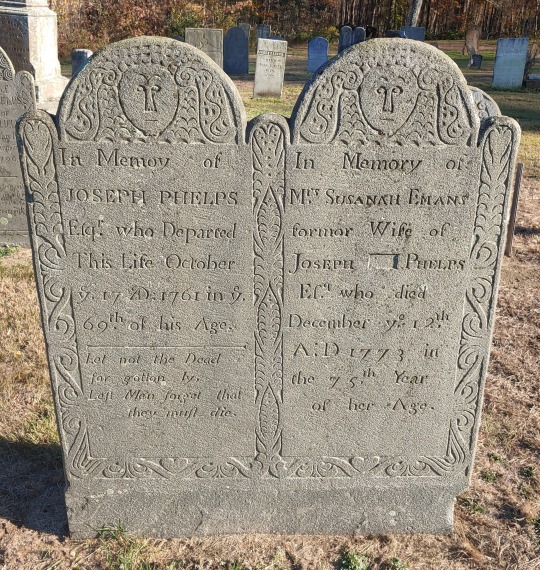
Double Grave Marker carved by Peter Buckland of Manchester dated 1773.
Here we have a double stone of Bolton Schist for Joseph Phelps and his wife Susanah Emans dated 1773 carved by Peter Buckland of Manchester Connecticut. Peter Buckland carved on a number of different stones including grey granite schist from the Bartlett quarry in Bolton as seen here, as well as brownstone from different quarries on the Connecticut river. Both Peter and his brother William Buckland apprenticed early on under prolific gravestone carver Gershom Bartlett, and would remain influenced by his work, as you can see from the same vine borders used here and elements in the face. This stone also shows flared curled lobed wings, somewhat like that used by Windsor carver Joseph Johnson. Bucklands style would influence other stonecutters especially among the Ritter family of East Hartford. Peter Bucklands work was popular in such towns as East Hartford, Glastonbury, Wethersfield, Tolland, South Windsor and of course his hometown of Manchester. This marker is located in the Old Hebron Cemetery on Wall Street in Hebron Connecticut.
#tombstones Peter Buckland Colonial funerary art burying ground burying ground Colonial funerary art colonial cemetery cemeteriesofnewengland#tombstones#Peter Buckland#Colonial funerary art burying ground#burying ground#Colonial funerary art#colonial cemetery#cemeteriesofnewengland#colonial gravestone#gravestone art#tombstone#funerary art#colonial cemeteries#gravestones#momento mori#colonial gravestones#gravestone carver#grave carver
13 notes
·
View notes
Text
On This Day In History - 1 November
ON THIS DAY IN HISTORY - 1 November
**I apologize for being late but I felt this event was too important to just skip**
On this day in 1920, 18-year-old Irishman Kevin Barry was executed by British forces at Mountjoy Prison in Dublin for his role in an IRA ambush that resulted in the death of 3 British soldiers.

Kevin Gerard Barry was born 20 January 1902 at 8 Fleet Street, Dublin to Thomas and Mary Barry. He was the 4th of the couple's 7 children. As a young man, he attended St Mary’s College, Rathmines, until the school was closed in 1916. From there he transferred to Belvedere College and was a member of the championship Junior Rugby Cup team, as well as secretary of the newly formed hurling club. In 1919, he entered University College Dublin as a medical student.
At the age of 15, while attending Belvedere College, Barry joined the Irish Republican Army (IRA). His first job was delivering mobilization orders around the city. Over the next few years, he was introduced to the reorganized Irish Republican Brotherhood (IRB) and took part in a number of operations. His final operation took place on the morning of 20 September 1920, when Barry went to mass, then joined a group of volunteers on Bolton Street. The plan was to ambush a British army truck that was picking up a delivery of bread and capture their weapons. Barry and the other IRA volunteers surrounded the lorry. The 5 soldiers at the back complied with the order to lay down their weapons but at some point, possibly from a soldier at the front, a shot was fired. Barry and the rest of his group then opened fire. His gun jammed several times causing him to dive for cover and in the chaos, the other volunteers fled leaving him behind. He was spotted and arrested. 1 soldier was killed during the ambush and 2 others who were wounded later died. Following his arrest, Barry was placed in the back of the lorry with the body of the dead soldier and transported to the North Dublin Union. He refused to give any information beyond his name, address, and occupation.
A month after the ambush on 20 October, Barry was tried by court-martial. The court sentenced him to death by hanging on 1 November. On 31 October, he was allowed visitors including his mother, brother, and sisters. On 1 November, after hearing 2 masses in his cell, Kevin Barry was hanged. His execution, just days after the death of hunger striker, Terence MacSwiney, the republican Lord Mayor of Cork, inflamed nationalist public opinion, in large part due to his age. His death brought international attention, with both the United States and the Vatican attempting to have his sentence lessened. With his death, and the death of Terence MacSwiney, came an escalation in violence and the War of Independence entered its bloodiest period.
A plain cross marked the grave of Kevin Barry and 9 others who would be handed at the same prison before the Anglo-Irish Treaty of 1921. Their grave went unidentified until 1934. On 14 October 2001, their remains were given a state funeral and moved from the unconsecrated grounds of the prison and re-interred at Glasnevin Cemetery.

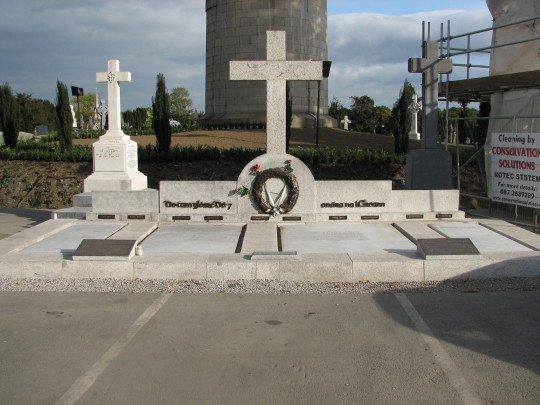
#ireland#irish history#irish war of independence#on this day#on this day in history#history#historian#november 1#1920
1 note
·
View note
Photo

Bolton Street Cemetery
Wellington, New Zealand, September 2018
#wellington#new_zealand#angel#cemetery#cimitero#cimetière#cmentarz#tomb#friedhöfe#graveyard#grave#graniteonmypizza
24 notes
·
View notes
Text
Pinchin Street torso
Birth date: (1849~1859) Killed and found (age): Ca. September 8th 1889, September 10th 1889 (30~40)
Complexion: Dark Eyes colour: ? Hair colour: Brown dark Height: 5’3” (160 cm) Occupation: Factory worker, prostitute
Clothes at the time of murder/discovery: Old chemise ?
Resting place: East London Cemetery, Grange park, Plaistow, Essex.
***


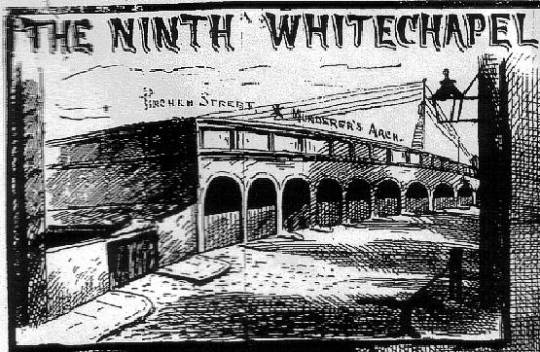
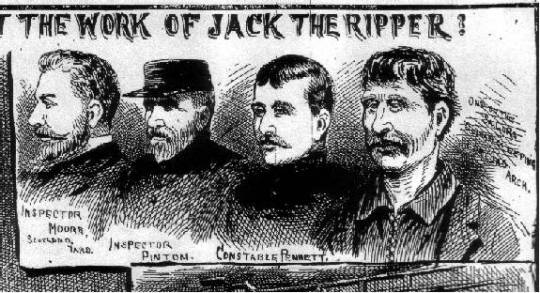
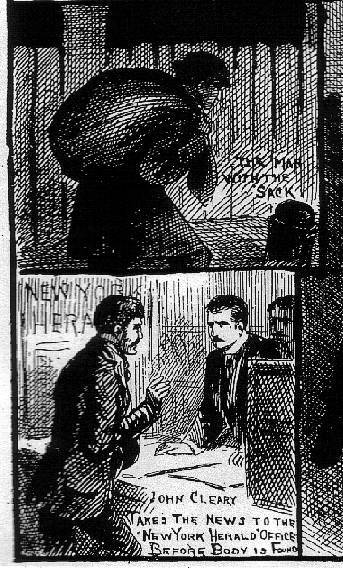

On Wednesday 10 September 1889, at 5:15am, Police Constable William Pennett found the headless and legless torso of an unidentified woman under a railway arch at Pinchin Street, Whitechapel. The body, heavily decomposed, was covered by an old chemise that was 37in. in length, common material, and stitched, but certainly not by an experienced needlewoman. It had evidently been home-made by a poor person.
Immediately, the PC summoned assistance and when Inspector Charles Pinhorn, H Division, arrived shortly after 5:30am two constables were already there.
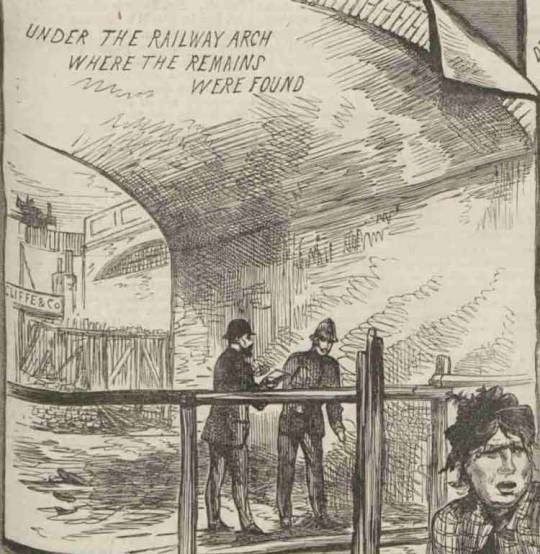
As an instance of the organisation of the police in the district since the recent Whitechapel murders, a special telegraphic signal had been arranged by which the fact of such a crime as the present one could be promptly conveyed to other police-stations. Shortly before six o'clock on Tuesday morning Scotland-yard received this message: "Whitechapel again"; and in the space of a few minutes they were able to telegraph all over the metropolitan police district the following message: "At 5.40 a.m. trunk of a woman found under the arches in Pinchin-street, E. Age about 40. Height, 5 ft. 3 in.; hair dark brown. No clothing, except chemise very much torn and bloodstained. Both elbows discoloured, as if from habitual leaning on them. Post-mortem marks around waist, apparently caused by a rope." Immediately upon the circulation of this telegram, the Thames Police, under Detective-Inspector Regan, and Chief-Inspector Henry Moore, displayed the utmost vigilance. Assisted by Sergeants Moore, Francis, Howard, Davis, and Scott, these officers at once got their various craft on the river and boarded all the vessels at the mouth of the Thames and in the Docks. The operation of searching these vessels had not concluded until a late hour in the evening, and so far as the investigation had gone the captains of the various vessels were able to give satisfactory accounts as to their crews.
A little before 6:00 am, Doctor Percy John Clark (or Clarke) was summoned. In this presence, the body was lifted on to an ambulance and taken to the St. George's mortuary by constables. He there re-examined the body: it was “that of a woman of stoutish build, dark complexion, about 5ft. 3in. in height, and between 30 and 40 years of age”. Both legs had been skilfully separated, and none of the abdominal organs were missing. He also thought that “the body had been dead at least 24 hours” but could had also been taken place some four days previously. Doctor George Bagster Phillips, the Divisional Surgeon, first examined the body at 6:00am the day the remains were found.
In the meantime communications, giving full particulars, were sent to Scotland-yard, and the Chief Commissioner James Monro, the Chief Constable of the district Colonel Bolton James Alfred Monsell, Superintendent Donald Sutherland Swanson, Detective Inspector Miller, Superintendent Thomas Arnold of the H Division, and local Inspector Edmund John James Reid all visited the scene of the discovery and made inquiries as to the matter. Later investigations by Sergeants William Thick and Stephen White along with Sergeant George Godley came across some bloodstained clothing in Batty Street (just off Commercial Street in the London Borough of Tower Hamlets), but little or nothing was made of it.
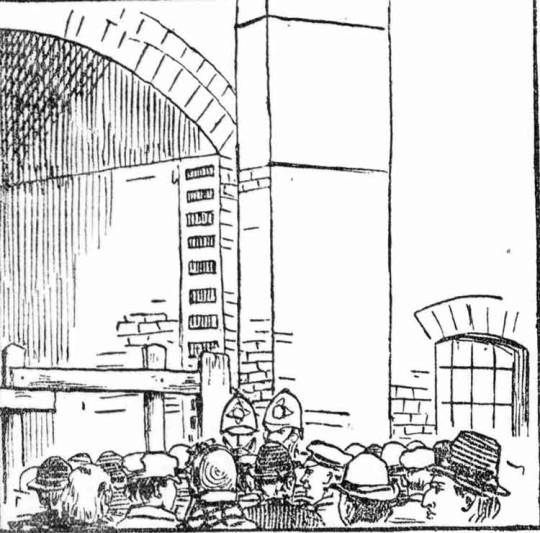
Later in the day Detective Inspector John Bennett Tonbridge, who had charge of Elizabeth Jackson’s case a short time ago, went to the mortuary and saw the remains. Mr. Clarke, the City Police surgeon Dr. Gordon Brown, and two other medical gentlemen who have had experience in previous cases of this nature shortly after made a more careful examination of the remains. It was noticed that the trunk displayed green patches; the flesh otherwise was white. The doctors, from their investigations, concluded that the cuts and wounds had been inflicted in a left-hand manner. The cut severing the head from the body was skilfully done, there being no hacking or clumsy dissection noticeable. Furthermore, a saw had been used to sever the bones in such a way as to leave no doubt that the person responsible for the dismemberment possessed a good knowledge of anatomy. There were no signs about the hands which would indicate that the woman had been used to hard work, and so far as could be seen there had been no attempt to obliterate a mark on one of the fingers, apparently caused by a ring. It was believed from certain indications that the deceased had never been a mother, but she might have been pregnant. The body was well-nourished and cared for.
In consequence of the similarity of the mode of dismemberment pursued in this case and those of the recent Elizabeth Jackson and Rainham mysteries; the officers engaged in those cases were consulted, and their general opinion was that the resemblance in the cases were very remarkable.
The next morning, Friday 11 September 1889, Dr. Phillips further examined the body in the presence of Dr. Brown and Dr. Charles A. Hibberd (or Hebbert). Dr Phillips was particularly reticent, even to the police authorities, as to the precise result of his examination of the trunk, but it was stated that the cause of death had not yet been thoroughly established. Both Dr Clark, Dr Phillips assistant, and Dr. Hibberd gave the height of the Pinchin victim as 5ft 3in (160 cm).
Three men were arrested, including Michael Keating and Richard Hawke, who were found sleeping under nearby arches. They were later cleared of the crime.
The estimated date of death was given as September 8, 1889, the one-year anniversary of Annie Chapman's murder; a fact which did not escape Chief Commissioner Monro's seven page report that was forwarded to the Home Office. Monro then went on to explain that, "...This street is close to Berner Street which was the scene of one of the previous Whitechapel murders [that of Elizabeth Stride]. It is not a very narrow street, but is lonely at night, & is patrolled every half hour by a constable on beat. The arch where the body was found abuts on the pavement. The constable discovered the body some what after 20 minutes past five on the morning of Tuesday [10th September 1889]...He is positive that when he passed the spot about five the body was not there...It may therefore be assumed that the body was placed where it was found some time between 5 & 5.30 am...Although the body was placed in the arch on Tuesday morning, the murder - (and although there is not yet before me proof of the cause of death, I assume that there has been a murder) was not committed there nor then. There was almost no blood in the arch, and the state of the body itself showed that death took place about 36 hours or more previously. This, then enables me to say that the woman was made away with probably on Sunday night, the 8th September. This was the date on which one of the previous Whitechapel murders [that of Annie Chapman] was committed ...". Monro entered into a detailed comparison of this murder with the previous Whitechapel atrocities in the case of the Pinchin Street victim, there was nothing to show that death was caused by the throat having been cut., in this latest case there was no mutilation "other than dismemberment". Previous victims had suffered evisceration, but the Pinchin Street victim most certainly hadn't. In several of the previous cases there had been removal of certain parts of the body, whereas with the Pinchin Street victim "There is no removal of any portion of the organs of generation or intestines..." . The killing of the Pinchin Street victim had may committed indoors, "...probably in the lodging of the murderer...", Monro went on to stress that "...there is no sign of frenzied mutilation of the body [as in Mary Jane Kelly's case, also committed indoors], but of deliberate & skilful dismemberment with a view to removal...". Monro then went on to point out that "These are all very striking departures from the practice of the Whitechapel murderer, and if the body had been found elsewhere that in Whitechapel the supposition that death had been caused by the Ripper would probably not have been entertained..." In conclusion, Monro stated that, " I am inclined to the belief that, taking one thing with another, this is not the work of the Whitechapel murderer...".
An interesting extract from the London edition of the ‘New York Herald' claimed that a man named John Cleary informed the night editor on the night of September 7 that there was a murder in Back Church Lane (from which runs Pinchin Street). Later, a statement was taken from a John Arnold, a newsvendor of Charing Cross, saying he was John Cleary. He continued to say that after leaving the King Lud pub, he had been told by a soldier in Fleet Street, "Hurry up with your papers. Another horrible murder in Backchurch Lane." He then went to the Herald to share his findings. The soldier he described as between 35 and 36 years of age, 5ft 6ins, fair complexion and moustache, and he carried a parcel. No one by this description was ever taken into custody concerning the murder.
Several names soon arose in the press as the identity of the woman, but they found later being alive and the identity of the body was never identified.
On Wednesday morning September 11th 1889, the Inquest was opened at the St. George's Vestry Hall, Cable-street, St-George's-in-the-East, Mr. Wynne Edwin Baxter opened the inquiry. Detective-Inspector Reid and Inspector Moore, of the Criminal Investigation Department, watched the case on behalf of the Chief Commissioner of Police.
The ‘Northern Daily Telegraph', on Monday, September 16th, 1889, published: “What may prove an important discovery in connection with the recent murder in Whitechapel was made on Saturday night. A fireman named Etherden was standing on a floating fire-station near Charing Cross, when he noticed something floating by. On reaching, he found that it was a brown paper parcel, which contained a chemise covered with blood. The parcel was handed over to the police at Scotland Yard...”.
The second and last day of the Inquest was Tuesday, September 24th, 1889. The jury at once returned the now familiar verdict of "Wilful murder against some person or persons unknown."
On 5th October 1889 the remains were laid to rest in the East London Cemetery, Grange park, Plaistow, Essex, in the public grave no. 16185 – 45 square, received from the St. George Mortuary. The remains were sealed in a tin container and preserved in spirits. The tin container was then enclosed in a black wooden box. The metal plate that adorned the case in which they were interred carried the simple inscription, "This case contains the body of a woman (unknown) found in Pinchin Street St Georges-in-the-East 10th Septr./89". This public grave had later been re-used and is not longer extant.
***
TO KNOW MORE:
Wikipedia
Casebook website – Casebook forums – Casebook press report – Inquest (from Casebook)
JTR Forums – JTR Forums – possible identity
Jack The Ripper 1888
The Jack the Ripper Tour
The Jack the Ripper Walk
Jack The Ripper Tour - Murder morning in Whitechapel – Jack the Ripper Tour - Is there a Murder gang? – Jack the Ripper Tour - The Whitechapel Murderer: A Discovery
Whitechapel Jack
BEGG, Paul (2013): Jack The Ripper. The Facts.
BEGG, Paul; FIDO, Martin & SKINNER, Keith (1996): The Jack The Ripper A – Z.
BELL, Neil R. A. (2014): Capturing Jack the Ripper: In the Boots if a Bobby in Victorian England.
CLAK, Robert (2015): The Pinchin Street Torso, in Ripperologist NUM 143, April.
EDDLESTON, John J. (2001): Jack the Ripper: An Encyclopedia.
EVANS, Stewart P. & RUMBELOW, Donald (2006). Jack the Ripper: Scotland Yard Investigates.
GORDON, R. Michael (2015): The Thames Torso Murders of Victorian London.
MACNAGHTEN, Sir Melville L. (1914): Days of My Years.
SKINNER Keith & EVANS, Stewart (2013). The Ultimate Jack the Ripper Sourcebook.
TROW, Meirion James (2011): The Thames Torso Murders.
#Pinchin Street torso#Victim#1889#Unidentified woman#Doctor George Bagster Phillips#wynne edwin baxter#Dr Charles A Hibberd#Detective Inspector John Bennett Tonbridge#Sergeant William Thick#Superintendent Donald Sutherland Swanson#Chief Commissioner James Monro#victorian crimes#Inspector Edmund John James Reid#Superintendent Thomas Arnold#Sergeant George Godley#Doctor Percy John Clark#1880s#Dr Gordon Brown#Chief Inspector Henry Moore#east london cemetery
8 notes
·
View notes
Photo

Thank you Wellington! ❤️🌲 Thank you Trippy Tree! 🌿 #Wellington #newzealand #trippytree #boltonstreetcemetery #garybaseman #baseman 📸 by @mikepottoncamera Had an amazing exhausting time in Wellington! Lovely Speaking Engagement at @vicuniwgtn and magical WildGirl photoshoot. I’m flying off to Nelson today! 🍃 (at Bolton Street Cemetery) https://www.instagram.com/p/Bv92048HRct/?utm_source=ig_tumblr_share&igshid=1k5ebie8b087i
2 notes
·
View notes
Photo

Bolton Street Cemetery (at Bolton Street Cemetery) https://www.instagram.com/p/ComJgEVy6op/?igshid=NGJjMDIxMWI=
0 notes
Text
Top 10 Summer Destinations in the UK
1. London
If you are looking to immerse yourself in the busyness of the hustle and bustle of the city then visit London. It offers the iconic London Eye, Big Ben, and Westminster. Overcome your fear of heights, visit the shard, or enjoy the beautiful Gherkin and see its beautiful architecture. If you’re looking to shop, then enjoy yourself in Oxford street as you lose yourself in the many retail stores it has waiting for you. Eat away and explore the diversity of London as you taste away in London’s Borough Market or Camden market.
2. Lake District
If you’re looking for a quiet getaway to cherish mother nature, then Lake District is the place for you. If you're feeling energetic why not hike up Lake district and camp amidst the beautiful view of the Lake. Lake District National Park is popular for its stunning scenery, abundant wildlife, and cultural heritage. Its special qualities include: Cool, clear lakes, tarns and rivers - nationally important stretches of water for their range of habitats, and species such as vendace, charr, crayfish, and schelly.

3. Cornwall
Cornwall is popularly known for its Celtic history, but it also offers a coastline located in the southwest of the UK. Let’s be frank, charming seaside trips are amazing. I mean, at the first sight of (sunshine or dry even dry weather for that matter) us Brits rush to the sea. It’s in our blood! Especially in Cornwall, where there’s a whole heap of pretty seaside towns and coastlines to explore. If you’ve never had a seaside holiday in England before then you’re in for a beautiful and mouth-watering treat. Most are filled with some of the tastiest fish and chip shops (add a few splashes of vinegar), lots of tearooms, and plenty of local pubs (a favourite once the sun starts to set) – with Cornwall being of no exception. With all the little hamlets, rugged rocks, and the kind of beaches that make you want to stay all day – you won’t want to leave this gorgeous area of England.
Some of the popular routes are
Glasgow taxi
London taxi
Norwich taxi
Abingdon taxi
Aldershot taxi
Andover taxi
Ashford taxi
Aylesbury taxi
Banbury taxi
Barnstaple taxi
Basildon taxi
Basingstoke taxi
Bath taxi
Bedford taxi
Bicester taxi
Birmingham taxi
Blackburn taxi
Bolton taxi
Bournemouth taxi
Bracknell taxi
4. Bath
Located in Somerset, Bath is rich in culture and history. It is the largest city in the county of Somerset, known for and named after its Roman-built baths One of the popular places to visit in Bath is the medieval Bath abbey along with its roman built bath. If you're exploring architecture, then why not try the royal crescent, an arc formed by Georgian townhouses designed by John Wood. Soaked in history Bath has plenty of places to visit, from The Circus and Stonehenge, Bath’s Many Crescents, and already mentioned Bath abbey.
5. Bournemouth Dorset
A genteel Victorian seaside resort on the South Coast of England, Bournemouth cultivates a polished, stately image. This has much to do with its many gardens, planted with sub-tropical species like palms and ferns that thrive in the town’s warmer microclimate. Bournemouth has some of the warmest sea temperatures in England, on seven miles of coast that includes four Blue Flag beaches, held as some of the best England has to offer. These beaches are hemmed by green cliffs, and you can use funicular railways built in Bournemouth’s Victorian heyday to get down. In a few spots, the cliff is broken by a ravine, known on the South Coast as a chine, and often landscaped with gardens. From the Hengistbury Head Beach to the Oceanarium to the West Cliff lift to the ever-popular Bournemouth Pier, it is full of eye-catching spectacles.
6. Edinburgh
The capital of Scotland, Edinburgh has got to be one of the most mysterious cities in Europe. Its dark, medieval walls hold so many secrets, most of which we probably don’t even know about boasts itself for its well-known Edinburgh castle. Uncover the history and visit the Scottish crown Jewel in the Royal places well as the Scottish national war memorial and the famous stone of destiny. Edinburgh is touted as the greenest city in the United Kingdom, the place exudates lush trees and plants everywhere. It is also known for the widely popular Edinburgh Fringe festival fare, the largest arts festival globally. All in all, it is a must summer destination in the UK.
7. Stonehenge in Salisbury
Stonehenge, prehistoric stone circle monument, cemetery, and archaeological site located on Salisbury Plain, about 8 miles north of Salisbury, Wiltshire, England. It was built in six stages between 3000 and 1520 BCE, during the transition from the Neolithic Period to the Bronze Age. As a prehistoric stone circle, it is unique because of its artificially shaped sarsen stones (blocks of Cenozoic silcrete), arranged in post-and-lintel formation, and because of the remote origin of its smaller bluestones from 100–150 miles away, in South Wales. Quench your thirst in history as you visit the world's oldest heritage site. Originally known as a place of worship it is now a popular tourist site. Salisbury holds one of the most popular cathedrals that goes far back to the Magna Carta.
8. Jurassic Coat
The Jurassic Coast is a World Heritage Site on the English Channel coast of southern England. It stretches from Exmouth in East Devon to Studland Bay in Dorset, a distance of about 96 miles, and was inscribed on the World Heritage List in mid-December 2001. The word Jurassic makes everyone think of dinosaurs. Yes, you won't be seeing dinosaurs but you can discover fossils from nearly 92 million years ago. With the cliff slowly eroding more and more fossils are released so be the first to set eyes on these fossils. Why not make the most of your day with places such as Durdle Door and Old Harry’s Rock why not make the most of your day.
9. St Michael’s Mount Cornwall
This tidal island is one of the marvellous festival fares in the UK. The island is a civil parish and is linked to the town of Marazion by a man-made causeway of granite setts, passable between mid-tide and low water. The legend that coexists with it says that giants still inhabit the cave on the island. Go see for yourself whether this is just a legend or whether the existence of such giants can be proved.
10. Bristol Clifton suspension bridge
Located in the Southwest of England this city encompasses the river, Avon. Its wealthy maritime history and M shed museum allows you to discover the social and industrial heritage. The Clifton Suspension Bridge is a suspension bridge spanning the Avon Gorge and the River Avon, linking Clifton in Bristol to Leigh Woods in North Somerset. Since opening in 1864, it has been a toll bridge, the income from which provides funds for its maintenance. The suspension bridge built by Isambard Kingdom Brunel is a recognizable structure with its spectacular view of the Avon Gorge is a must-see.
0 notes
Text
Wellington Botanic Garden, Otari-Wilton's Bush Native Botanic Garden, and Bolton Street Cemetery
Wellington Botanic Garden, Otari-Wilton’s Bush Native Botanic Garden, and Bolton Street Cemetery
One of the most popular gardens in New Zealand, Wellington Botanic Garden dates back to 1868 and retains some distinctively Victorian areas as well as some more modern additions. The gardens end by Bolton Street Cemetery, which had a motorway built through the middle of it in the 1960s which would be unthinkable today I think. Otari-Wilton’s Bush Native Botanic Garden is twenty minutes by bus…
View On WordPress
#Bolton Street Cemetery#Botanic Gardens#cemetery#gardens#graveyard#New Zealand#Otari-Wilton&039;s Bush Native Botanic Garden#photography#travel#Wellington#Wellington Botanic Garden
0 notes
Photo
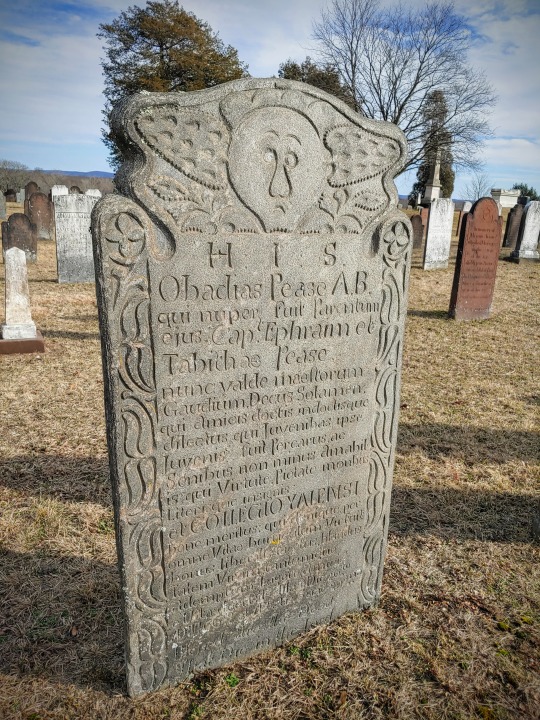
This elaborate grey schist maker in the Enfield Street Cemetery was carved by Gershom Bartlett of Bolton Connecticut. Bartlett’s father was a carver, and so were several other relatives, though they carved in a style imitating the plain sharp stones of George Griswold. Gershom first began carving in South Windsor on brownstone in the late 1740’s. He would soon move back to his hometown of Bolton and purchase the land of which he would start the Bolton Notch granite schist quarry, which he would source material for markers from. Bartlett originally used some design elements from Joseph Johnson of Windsor, though he quickly created his own unique design, revolving around a bulbous face that often resembled a lightbulb, lobed wings, clover rosettes, and a nose and eye design that resembled a hook and eye. On more elaborate stones like this one, he would incorporate large wings that almost resemble strawberries, and more elaborate border patterns. He was the most popular carver in Eastern Connecticut during his career, with work spread in large numbers in such towns as Colchester, Wethersfield, Woodstock, Enfield, Scotland, Hartford, Hebron, Farmington, Windham, and his hometown of Bolton. Numbers of his markers spread as far south as Old Lyme and New London, as far east as Brooklyn and Sterling, and as far north as Charlton Mass and many other towns in between. His quarry produced a durable, attractive grey schist and many other cavers would often purchase raw material from the quarry, including Josiah Manning, Jonathan Loomis, the Buckland Brothers, and Zerrubabel Collins among others. In 1774, rising land prices put a hold on Bartletts speculations on buying property and he would move with his family to Pompanoosuc Vermont where he would continue carving stones now from slate and he would become the most popular carver of the region again. He carved until his death in 1798, over 1200 of his stones left behind mixed in New Englands’ graveyards. This marker is carved entirely in latin, the only example of Bartletts work in that language, dates to 1765 and marks the grave of a Harvard Graduate, who died in the prime of his life.
#tombstonestombstoneconnecticut cemeteriesgravesgraveyardtombstone artgravestone artcemeterytaphophilefunerary artgrave markergravestoneold g#tombstones#tombstone#connecticut cemeteries#graves#graveyard#tombstone art#funerary art#gravestone art#grave marker#cemeteries#Colonial Cemeteries#Cemetery#Colonial funerary art#gershom bartlett
3 notes
·
View notes
Photo

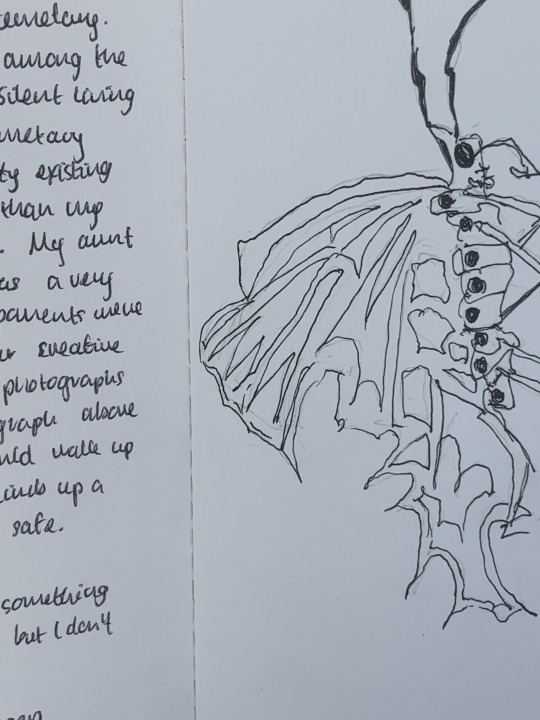
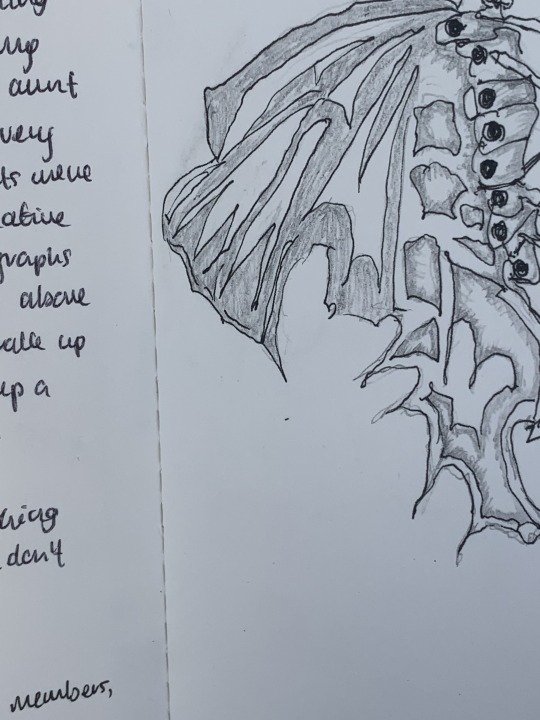
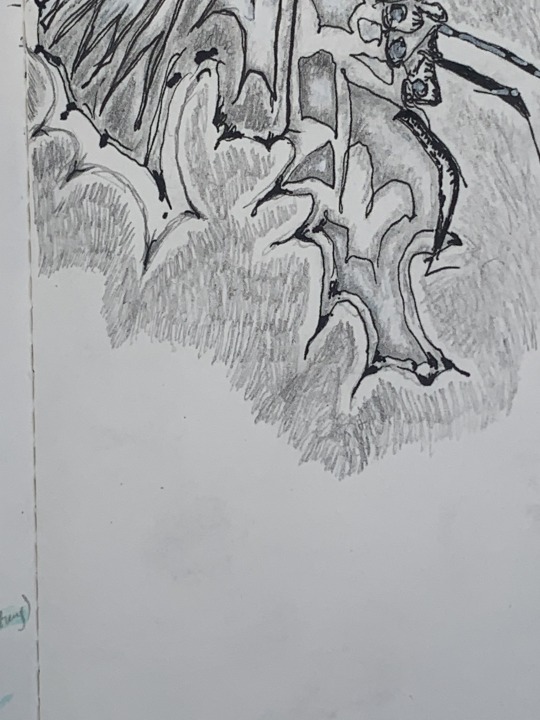
Drawing - continued
With materials I collected from the Bolton Street Cemetery, I began to draw some of them - mainly the ones with interesting shapes. I was drawn to some butterflies I found due to a strange coincidence that has kept occurring - I have left my site/ been near it and have been stopped in my path by perfectly formed dead insect corpses. It seemed so wild how perfectly precious they all were, and how often it is happening. Upon researching this weird coincidence I found that this was a sort of spiritual message being sent to me by the universe. This only made me more fascinated with the site, and feel more connected to it. The sharp, piercing edges of the wings is what drew me to draw them, as alike to my overwhelming thoughts within the cemetery - they are both beautiful and intimidating.
0 notes
Photo

Bolton Street Cemetery
Wellington, New Zealand, September 2018
#wellington#new_zealand#cemetery#cimitero#cimetière#cmentarz#friedhöfe#groblje#graveyard#cementerio#graniteonmypizza
33 notes
·
View notes
Photo

Inspired by my magical day at the Bolton Street Cemetery, I did this drawing in my sketchbook. 💚 @mikepottoncamera @laurahiener @cole_slaw_ @meozu.art @bella_beetle @youmyhull @mikemadeamess @charshade_ #basemanwildgirls #garybaseman #baseman #ccwildgirls #wellington #newzealand 💚 My heart is full. I don’t know where the spirits will take me but I’m open for the adventure. (at New Zealand) https://www.instagram.com/p/BwF46IcgT3t/?utm_source=ig_tumblr_share&igshid=vqsihdjwjpf0
1 note
·
View note
Text
A Bad Week in the Oval Office
by Mitch Maley — So it’s been a rough week for Donald Trump. First, The Atlantic published a story quoting senior administration officials who claimed the president had called U.S. soldiers “losers” and “suckers.” Then, famed Watergate journalist Bob Woodward released audio tapes of Trump admitting he’d deliberately misled the American people regarding the severity of the COVID-19 pandemic during its early stages. Will any of this matter as a nation divided prepares to cast votes in what could be one of the most consequential elections in American history?
While the mainstream media made much of President Trump's reported disparagement of military personnel while visiting France, the story seemed to have little impact on average voters. Those who support Trump blindly once again contorted themselves into ridiculous positions in order to defend the president, claiming that he'd never say such things about American soldiers. Some even went so far as to highlight the fact that former White House national security adviser John Bolton, who was also on the trip, said he hadn't heard President Trump refer to American soldiers buried at a French cemetery as "losers" and "suckers."
Yes, that's the same John Bolton Trump’s supporters told us not to believe when, in his recent memoir, he claimed the president had requested Chinese help in the upcoming election, encouraged Chinese President Xi Jinping to continue building concentration camps for Uyghur Muslims, offered to help Turkish President Recep Tayyip Erdogan with a Justice Department investigation, didn't like the sanctions on Russia (which he mistakenly thought contained Finland), and wanted Attorney General William Barr to go after journalists who were unkind to the president, having them serve time while being forced to give up their sources.
"I didn't hear that," Bolton told The New York Times, regarding the derogatory statements on soldier. "I'm not saying he didn't say them later in the day or another time, but I was there for that discussion." Yes, that was all the proof they needed, a man they'd just pronounced untrustworthy announcing that if such statements were made, he wasn't within earshot. That and the fact that the Atlantic article used "anonymous" sources.
From many of the comments I've seen, it's clear that most everyday citizens don't understand what an "anonymous source" really is. No, such statements do not come by way of an unsigned letter with no return address or a phone call using voice altering software. It simply means the journalist and publication used vetted quotes or other information from a verified source and allowed them to be published without attribution to the person by name.
This is always the less prefered option of any publication because attributed information carries more weight. However, there are many good reasons a publication will use such information without attribution, the most common being a legitimate fear of professional retribution for sharing potentially damaging information on an employer or other person or institution capable of acting punitively toward the source.
That said, there's plenty of reason to question the motive and timing of that particular article, starting with its author. Journalist Jeffrey Goldberg has been a longtime proponent of the military industrial complex, pushing NeoCon talking points into the news cycle on everything from patently false information used to justify the 2003 invasion of Iraq to later pushing for a strike on Iran. This makes the anonymous sourcing weaker by association. The almost immediate release of related attack ads from NeoCon groups like Votevets and the Lincoln Project also send up red flags for a 30-month old story released just before an election.
That said, sources for other publications quickly confirmed the veracity of the statements. Even Fox News had to backpedal on its initial defense of the president when the network's national security correspondent claimed that not only had two former senior officials in the administration confirmed to her the comments in question but that one said that when the President spoke about the Vietnam War, which he avoided by claiming a very questionable medical condition, he said, "It was a stupid war. Anyone who went was a sucker." The same official said that when speaking about American veterans, the president once said, "What's in it for them? They don't make any money." In the words of that official, "It was a character flaw of the President. He could not understand why someone would die for their country, not worth it."
But let's face it. For Trump supporters, it's always going to be fake news when an article claims he's anything short of the second coming. Meanwhile, for those who haven't drank the Kool-Aid, it was just par for the course. Whether or not Trump used those exact words, he's expressed similar sentiments so often that there would be nothing revealing in knowing that he tended to make such statements behind closed doors and away from the cameras and microphones. I mean this was the guy who, despite having dodged service in Vietnam by claiming shin splints, said that John McCain wasn't a war hero for serving five years in a Hanoi prison camp, just a guy who got captured by the enemy.
The Atlantic article also mentioned the late McCain with Goldberg claiming that three sources told him that following McCain's 2018 death, Trump told senior staff, "We’re not going to support that loser’s funeral," and, when he saw flags lowered to half-mast, said, "What the fuck are we doing that for? Guy was a fucking loser." Trump disputed those allegations, claiming he'd never called McCain a loser, only there's video of the president calling him just that 2015 Family Leadership Summit. AND he literally retweeted a headline that same day that read "Donald Trump: John McCain Is ‘A Loser.’" Again, you'd have to have the Trump Kool-Aid flowing coldly through your veins to assert that it would be preposterous to believe that the president might turn it up a notch or two in private, but that's where we're at in the Trump presidency.
Meanwhile, Trump supporters seem equally unfazed by the crisp, crystal-clear audio recordings of the president telling Bob Woodward that he willfully lied to the American people at the onset of the Coronavirus pandemic, downplaying its potential lethality and withholding vital information as to how it was believed to be transmitted in order to keep Wall Street calm and the economy rolling during an election year. The difference between this and the distasteful comments about the men and women who serve our country, of course, is that as President of the United States, the potential impact of sewing this kind of disinformation can be directly measured in American lives.
An earlier analysis by Columbia University found that if the U.S. had gone into a shutdown just one week earlier (March 8 instead of the 15th), 36,000 deaths could have been prevented. Yet Trump told Woodward how deadly the disease was, explaining that it was many times more fatal than flu and was capable of airborne transmission way back on February 7, despite continuing for weeks to tell the American people that the virus was no big deal an would magically disappear! Not only does this provide further proof that Trump willfully decided to go against the best available scientific information, but his flippant dismissal of the impending danger can be said to have birthed the COVID-is-a-hoax conspiracy mindset driven almost exclusively by MAGA hat-wearing Trump supporters, compounding the effects of his early inaction even once mitigation efforts were finally put in place. And let’s also not fail to recognize that by holding onto all of this audio while Americans died just so that he could use it to sell more copies of his timed-for-the-election season book, there’s blood on Woodward’s hands as well.
Will any of this matter to Trump's supporters? Of course not. As I've said before, the social cost of supporting a man like Donald Trump has been far too high for even otherwise reasonable minds to transcend the cognitive dissonance that accompanies being confronted even with the most irrefutable evidence that he's a failed leader, an immoral narcissist incapable of selflessly serving his nation because he cannot view any crisis or cause other than through the narrow lense of its benefit or price to him personally. Ironically, the more that is revealed, the further invested they become. For proof, simply go to your favorite Trump-supporting family member's Facebook page anytime a story like one of these is dominating the news cycle and you'll find an inordinate amount of posts linked to articles about "the radical left," "socialism," Nancy Pelosi's hair salon debacle, Joe Biden's hair sniffing, or Trump rising in a poll among some voter group. Because when you're supporting someone like Trump, it requires constant self-reminders that there must be some greater evil out there, some existential threat that makes an otherwise shameful association not only acceptable but downright necessary.
As for that small sliver of moderate, suburban voters who will likely decide this election by determining whether or not lower taxes on the affluent (and the recent promise of more to come if he's reelected) is worth the embarrassment of pulling the lever for such a man, only time will tell whether this continued onslaught of reasons not to trust him with the fate of the nation will turn the tide come November. But for a man who lost the popular vote by more than three million last time around, while his Electoral College victory was held together by less than 80,000 votes across three swing states before he mismanaged a pandemic that has killed more Americans than every war since Korea combined while sending millions more into financial peril, these recent scandals certainly don't help his chances.
Dennis “Mitch” Maley has been a journalist for more than two decades. A former Army Captain, he has a degree in government from Shippensburg University and is the author of several books, which can be found here.
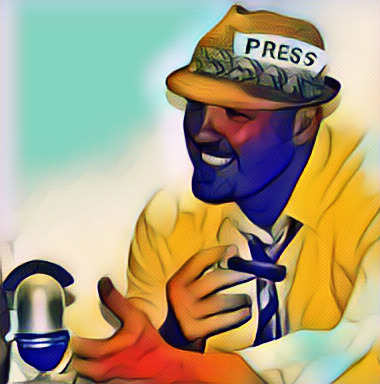
0 notes
Photo





Massive Patriot Naval Fleet Comes To Rescue After Socialist Apple Falls On Trump's Head
By: Sorcha Faal,
An insightful new Security Council (SC) report circulating in the Kremlin today discussing the latest attempts being used by the socialist Democrat Party to win their election against President Donald Trump, says most notable are their tactics going beyond the American idiom “scrape the bottom of the barrel” to using the entire barrel itself—and is an idiom defined as “using the last or worst of the resources or options from a particular range or set, even if they are not satisfactory, because there are no others to choose from”—best exampled over the past 24-hours by these socialist Democrats celebrating the book “Disloyal: A Memoir: The True Story of the Former Personal Attorney to President Donald J. Trump” written by convicted criminal felon Michael Cohen, that comically “calls Trump a cheat who sought help from Russia”—and celebrating the book “Compromised: Counterintelligence and the Threat of Donald J. Trump” written by soon to be convicted criminal felon fired and disgraced former FBI official Peter Strzok, that beyond laughably suggests that President Trump was “a full-fledged mind controlled “Manchurian Candidate” for Russia”—deranged celebrations joined by socialist Democrat Party leader Hillary Clinton, who posted an epic unhinged video slamming President Trump and Russia while her husband former President Bill Clinton looked on in helpless anguish—that’s best described by conservative Hollywood actor James Woods, who wrote about this Bill Clinton hostage video saying: “From the Lolita Express and hummers in the Oval Office to forced quarantining with Satan’s bride…Karma is a bitch”.
Though for sheer lunatic desperation, the “barrel itself” prize undoubtedly must go to the leftist publication The Atlantic for their vile fake news article that said “anonymous sources” told them that President Trump canceled a visit to an American war cemetery in France last year because he didn’t want to get his hair wet for “suckers” and “losers”—vile and provable lies proved by Trump-hater John Bolton, who meticulously detailed in his book how the weather was so bad in France that day General John Kelly cancelled President Trump’s visit to this American war dead cemetery—and further sees 10 eyewitnesses going on the record stating that this vile garbage published by The Atlantic is an outright lie—while most critical to know about this vile leftist garbage is that The Atlantic is owned and controlled by socialist multi-billionaire Laurene Powell Jobs—the widow of tech giant Apple founder Steve Jobs—who also happens to be a Joe Biden mega-donor having given his campaign over $600,000—also sees Laurene Powell Jobs being a close personal friend of socialist multi-billionaire Shopping-mall scion Deborah J. Simons, who hates Vice President Mike Pence with every fiber of her being—that’s important to know as Deborah J. Simons is the top donor to the socialist organization VoteVets.Org based in Portland-Oregon—and is the same VoteVets.Org that just hours after The Atlantic’s vile fake news story went live, released a highly produced ad on MSNBC’s Morning Joe featuring veteran families discussing their fallen loved ones in a rebuke to Trump featuring direct quotes exclusively featured in The Atlantic report.
https://www.youtube.com/watch?time_continue=5&v=5BPstelHRVo&feature=emb_logo
Whatever this elite socialist Apple privileged heiress hoped to accomplish by pummeling President Trump over the head with these vicious lies and leftist media hit job no one knows—as since all of these socialist Democrat Party “scrape the bottom of the barrel” tactics occurred, not a single pro-Biden rally has been seen anywhere in America—as instead, Biden terrorists over the past few hours have thrown fire bombs against police in Portland-Oregon and continue to rampage in the streets of Rochester-New York and New York City terrorizing citizens—while at the same time, patriotic Americans continued to unleash massive boat parades showing their support for President Trump in North Carolina, Minnesota, Texas, Missouri, Ohio and Florida—which rival the world’s largest boat parade that took place in Malaysia on 14 September 2014, when 1,180 boats took part in the Malaysia Day celebrations along the South China Sea—a record shattered during the 4th of July weekend when a Trump supporting boat parade saw 3,417 boats in South Carolina—last month saw another massive Trump boat parade in Florida trying to break this record even more—and yesterday in New Jersey saw up to 3,000 more Trump supporting boats putting to sea—all of which have been totally ignored by the leftist mainstream propaganda media—that is until a few hours ago, which was when the leftist New York Times reported on yesterday’s massive Trump supporting boat parade in Texas because bad weather caused 4 of them to sink.
In defiance of socialist Apple heiress lying smear, socialist Hillary Clinton’s deranged Russian delusions and Biden terrorists, patriotic Americans show their support for President Donald Trump with largest boat parades ever seen in world history.
In order for any of these socialist Democrat Party and leftist mainstream propaganda media “scrape the bottom of the barrel” tactics to be effective, this report concludes, they first must be known about and believed—a critical reality to know about, as all of these lying tactics have met what is being called the “Get Woke, Go Broke” headwind—a term that describes how the great masses of the American people have zero interest in the lies and propaganda these godless monsters are spreading—best exampled in the ratings collapse of viewers watching the “woke” National Basketball Association and its games—as well as the “woke” Major League Baseball that’s watching its viewership ratings collapse into oblivion, too—while at the same time, the honest and truthful pro-Trump network Fox News continues breaking all viewership records, and to such a remarkable extent, the Fox News afternoon show “The Five” astonishingly now has more viewers than every single one of CNN’s and MSNBC’s prime time news shows—all of which more than explains why the approval rating for President Trump is now back to his pre-COVID high of 52%—and most importantly, confirms the wisdom of Republican Party President Abraham Lincoln—who during his war against these Democrat Party demons while the American Civil War raged on, told them to their faces: “You can fool all the people some of the time, and some of the people all the time, but you cannot fool all the people all the time”.
0 notes